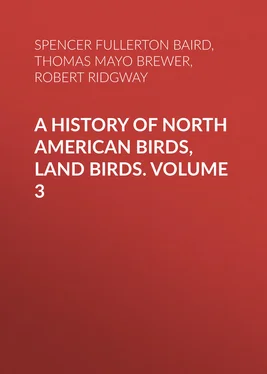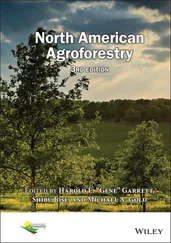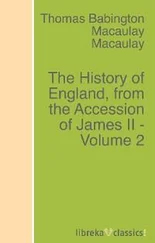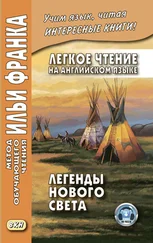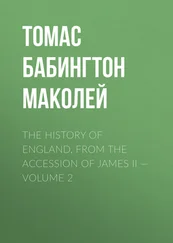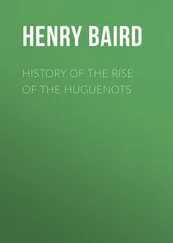Spencer Fullerton Baird - A History of North American Birds, Land Birds. Volume 3
Здесь есть возможность читать онлайн «Spencer Fullerton Baird - A History of North American Birds, Land Birds. Volume 3» — ознакомительный отрывок электронной книги совершенно бесплатно, а после прочтения отрывка купить полную версию. В некоторых случаях можно слушать аудио, скачать через торрент в формате fb2 и присутствует краткое содержание. Жанр: foreign_antique, Биология, foreign_edu, на английском языке. Описание произведения, (предисловие) а так же отзывы посетителей доступны на портале библиотеки ЛибКат.
- Название:A History of North American Birds, Land Birds. Volume 3
- Автор:
- Жанр:
- Год:неизвестен
- ISBN:нет данных
- Рейтинг книги:5 / 5. Голосов: 1
-
Избранное:Добавить в избранное
- Отзывы:
-
Ваша оценка:
- 100
- 1
- 2
- 3
- 4
- 5
A History of North American Birds, Land Birds. Volume 3: краткое содержание, описание и аннотация
Предлагаем к чтению аннотацию, описание, краткое содержание или предисловие (зависит от того, что написал сам автор книги «A History of North American Birds, Land Birds. Volume 3»). Если вы не нашли необходимую информацию о книге — напишите в комментариях, мы постараемся отыскать её.
A History of North American Birds, Land Birds. Volume 3 — читать онлайн ознакомительный отрывок
Ниже представлен текст книги, разбитый по страницам. Система сохранения места последней прочитанной страницы, позволяет с удобством читать онлайн бесплатно книгу «A History of North American Birds, Land Birds. Volume 3», без необходимости каждый раз заново искать на чём Вы остановились. Поставьте закладку, и сможете в любой момент перейти на страницу, на которой закончили чтение.
Интервал:
Закладка:
Whether the North American and European Peregrine Falcons are or are not distinct has been a question undecided up to the present day; almost every ornithologist having his own peculiar views upon the relationship of the different forms which have been from time to time characterized. The most favorably received opinion, however, seems to be that there are two species on the American continent, and that one of these, the northern one, is identical with the European bird. Both these views I hold to be entirely erroneous; for after examining and comparing critically a series of more than one hundred specimens of these birds, from every portion of America (except eastern South America), including nearly all the West India Islands, as well as numbers of localities throughout continental North and South America, I find that, with the exception of the melanistic littoral race of the northwest coast (var. pealei ), they all fall under one race, which, though itself exceedingly variable, yet possesses characters whereby it may always be distinguished from the Peregrine of all portions of the Old World.
There is such a great amount of variability, in size, colors, and markings, that the F. nigriceps , Cassin, must be entirely ignored as being based upon specimens not distinguishable in any respect from typical anatum . Judging from the characters assigned to the F. cassini by its describer (who evidently had a very small series of American specimens at his command), the latter name must also most probably fall into the list of synonymes of anatum .
Slight as are the characters which separate the Peregrines of the New and Old World, i.e. the immaculate jugulum of the former and the streaked one of the latter, they are yet sufficiently constant to warrant their separation as geographical races of one species; along with which the F. melanogenys , Gould (Australia), F. minor , Bonap. (South Africa), F. orientalis , Gmel. (E. Asia), and F. calidus , Lath. (Southern India and East Indies), must also rank as simple geographical races of the same species. Whether the F. calidus is tenable, I am unable to state, for I have not seen it; but the others appear to be all sufficiently differentiated. The F. radama , Verreaux (Gray’s Hand List, p. 19, No. 170), Mr. Gurney writes me, is the young female of var. minor . Whether the F. peregrinator , Sundevall (Gray’s Hand List, No. 169), is another of the regional forms of F. communis , or a distinct species, I am not able at present to say, not having specimens accessible to me for examination.
Mr. Cassin’s type of “ nigriceps ” (13,856, ♂, July), from Chile, is before me, and upon comparison with adult males from Arctic America presents no tangible differences beyond its smaller size; the wing is a little more than half an inch, and the middle toe less than the eighth of an inch, shorter than in the smallest of the North American series,—a discrepancy slight indeed, and of little value as the sole specific character; the plumage being almost precisely similar to that of the specimen selected for the type of the description at the head of this article. In order to show the little consequence to be attached to the small size of the individual just mentioned, I would state that there is before me a young bird, received from the National Museum of Chile, and obtained in the vicinity of Santiago, which is precisely similar in plumage to the Nevada specimen described, and in size is even considerably larger, though it is but just to say that it is a female; the wing measures 13.25, instead of 12.50, and the middle toe, 2.00, instead of 1.85. No. 37,336, Tres Marias Islands, Western Mexico,—a young male in second year,—has the wing just the same length as in the smallest North American example, while in plumage it is precisely similar to 26,785, of the same age, from Jamaica. No. 4,367, from Puget’s Sound, Washington Territory,—also a young male,—has the wing of the same length as in the largest northern specimen, while the plumage is as usual.
Two adult females from Connecticut (Nos. 28,099 and 32,507, Talcott Mt.) are remarkable for their very deep colors, in which they differ from all other North American examples which I have seen, and answer in every particular to the description of F. cassini , Sharpe, above cited. The upper surface is plumbeous-black, becoming deep black anteriorly, the head without a single light feather in the black portions; the plumbeous bars are distinct only on the rump, upper tail-coverts, and tail, and are just perceptible on the secondaries. The lower parts are of a very deep reddish-ochraceous, deepest on the breast and abdomen, where it approaches a cinnamon tint,—the markings, however, as in other examples. They measure, wing, 14.75; tail, 7.50; culmen, 1.05–1.15; tarsus, 2.00; middle toe, 2.30. They were obtained from the nest, and kept in confinement three years, when they were sacrificed to science. The unusual size of the bill of these specimens (see measurements) is undoubtedly due to the influence of confinement, or the result of a modified mode of feeding. The specimens were presented by Dr. S. S. Moses, of Hartford.
An adult male (No. 8,501) from Shoal-water Bay, Washington Territory, is exactly of the size of the male described. In this specimen there is not the slightest creamy tinge beneath, while the blue tinge on the lower parts laterally and posteriorly is very strong. No. 52,818, an adult female from Mazatlan, Western Mexico, has the wing three quarters of an inch shorter than in the largest of four northern females, and of the same length as in the smallest; there is nothing unusual about its plumage, except that the bars beneath are sparse, and the ochraceous tinge quite deep. No. 27,057, Fort Good Hope, H. B. T., is, however, exactly similar, in these respects, and the wing is but half an inch longer. In No. 47,588, ♂, from the Farallones Islands, near San Francisco, California, the wing is the same length as in the average of northern and eastern specimens, while the streaks on the jugulum are nearly as conspicuous as in a male from Europe.
In conclusion, I would say that the sole distinguishing character between the Peregrines from America and those from Europe, that can be relied on, appears to be found in the markings on the breast in the adult plumage; in all the specimens and figures of var. communis that I have seen, the breast has the longitudinal dashes very conspicuous; while, as a general rule, in anatum these markings are entirely absent, though sometimes present, and occasionally nearly as distinct as in European examples. Therefore, if this conspicuous streaking of the breast is found in all European specimens, the American bird is entitled to separation as a variety; but if the breast is ever immaculate in European examples, then anatum must sink into a pure synonyme of communis . The var. melanogenys is distinguished from both communis and anatum by the black auriculars, or by a greater amount of black on the side of the neck, and by more numerous and narrower bars on the under surface. In the former feature examples of anatum from the southern extremity of South America approach quite closely to the Australian form, as might be expected from the relative geographical position of the two regions. The var. minor is merely the smaller intertropical race of the Old World, perhaps better characterized than the tropical American form named F. nigriceps by Cassin, the characters of which are so unimportant, and withal so inconstant, as to forbid our recognizing it as a race of the same rank with the others.
National Museum, 45; Boston Society, 4; Philadelphia Academy, 22; Museum Comp. Zoöl. 5; New York Museum, 3; G. N. Lawrence, 6; R. Ridgway, 3. Total, 88.
Читать дальшеИнтервал:
Закладка:
Похожие книги на «A History of North American Birds, Land Birds. Volume 3»
Представляем Вашему вниманию похожие книги на «A History of North American Birds, Land Birds. Volume 3» списком для выбора. Мы отобрали схожую по названию и смыслу литературу в надежде предоставить читателям больше вариантов отыскать новые, интересные, ещё непрочитанные произведения.
Обсуждение, отзывы о книге «A History of North American Birds, Land Birds. Volume 3» и просто собственные мнения читателей. Оставьте ваши комментарии, напишите, что Вы думаете о произведении, его смысле или главных героях. Укажите что конкретно понравилось, а что нет, и почему Вы так считаете.
